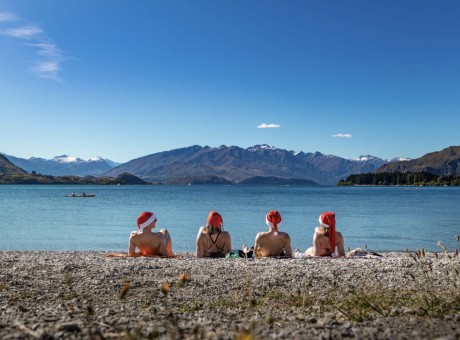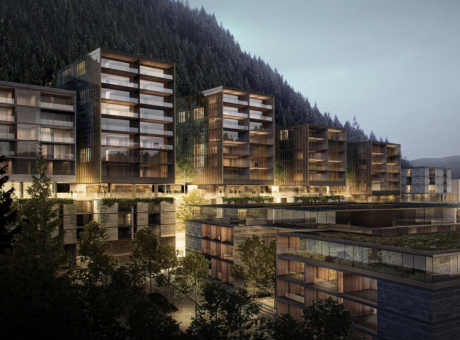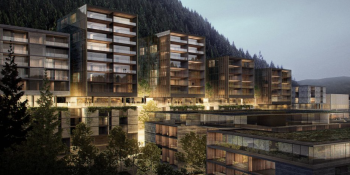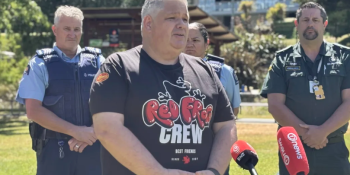QLDC warned of logging dangers in 2020
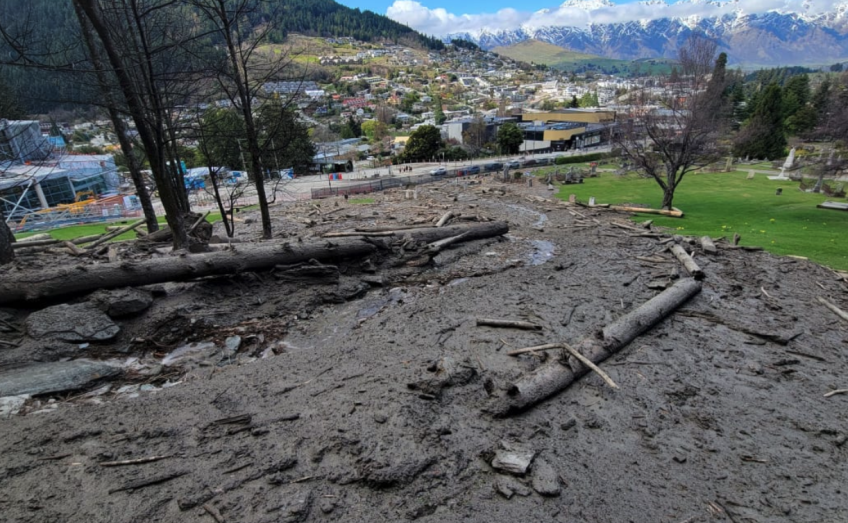
Leaving logs and forestry leftovers lying in the path of a potential water flow is an accident waiting to happen, according to the president of the New Zealand Institute of Forestry.
James Treadwell says it's best practice to know where water is is likely to run after rain and make sure that area is kept clear.
“In forestry, we would not leave slash in waterflow areas…normal practice would be to figure out where the water flow was and try and keep them out of that area.”
Overnight on Thursday record rainfall swept leftover logs from felling operations on Bob's Peak down the steep slope behind the Queenstown CBD, dragging debris with it.
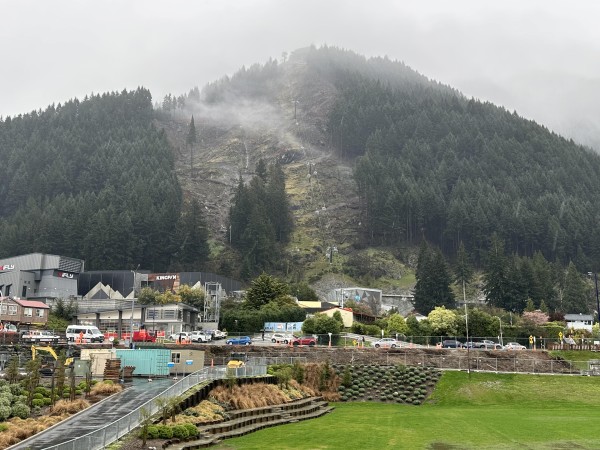
'It looks pretty bad', James Treadwell says of the sliver of steep, bare slope on Bob's Peak (Photo taken Friday, September 22).
After viewing photos of the before and after supplied by Crux, Mr Treadwell says, "It looks pretty bad".
It is unclear how many of the logs brought down in last week's rain were from a felling operation in recent years by the Skyline gondola or from a separate felling operation by council contractors. The land in question is Crown-owned, council-managed reserve.
Consent documents sighted by Newsroom reveal Queenstown Lakes District Council was made aware of water-runoff risks in 2020, and recommended to install channels and sediment traps, when it applied to itself for go-ahead to remove trees on the slope.
According to the application documents, while some larger logs would be collected for sale, others would be left on the ground to rot. The unstable nature of the hillside was noted, as was the inaccessibility of some spots for even larger logs to be retrieved.
Another technical report included in the council's application documents identifies a large, historical debris fan extending down "the majority of the site" ending at the base of the slope, where it borders the Queenstown Cemetery - this report recommends significant hazard mitigation work including the removal or stabilisation of boulders, the installation of mesh over bluffs, and the construction of catch fences and benches, as the likelihood of rockfall was "almost certain".
Mr Treadwell “doesn’t understand” why there wasn't a few rows of pines left at the bottom of the slope as a precaution, which could help stop slash from travelling further down the hill in events like this.
Looking at pictures several months old, that show the size and number of larger logs left behind, wedged in behind stumps, after the felling operations, he acknowledges the steep site is a tricky one to manage, and he can't offer any easy solution.
“I can see what they’re trying to do but that’s a lot of weight to be placing on those stumps.”
He guesses some of the logs left behind would weigh up to three tonnes and would be very difficult to clear, particularly considering its “really steep country”.
Considering the weight of the logs, Mr Treadwell is surprised they’d been swept down the hill at all, saying the area “must’ve had a hell of a lot of water”.
Queenstown received a month’s worth of rainfall in 24 hours.
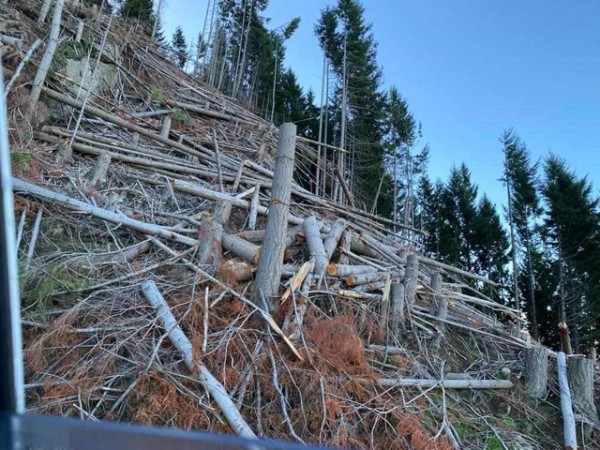
'I can see what they're trying to do' - Mr Treadwell of the leftover stumps in this photo taken below the gondola in April, 2023 (Image: Supplied).
It is Mr Treadwell's view decision-makers are now stuck between “a rock and a hard place”, as the only other option is to completely clear pines from the location, or replace them with natives, however, the latter would take a considerable amount of time.
“The town needs to have a conversation about how they manage that hillside. You've got a mixture of tourism – tourism needs the trees removed from a safety perspective and a fire perspective – yet the town wants to leave the trees there.
“This is really steep country, these are the trade-offs that you have.”
Meanwhile the Queenstown Lakes District Council is refusing to answer questions from Crux on what responsibility it has for the logs left behind on Bob's Peak.
For now, the council appears focused on clean-up, especially around Queenstown Cemetery, where logs and debris piled up on Friday morning, destroying some headstones. 





